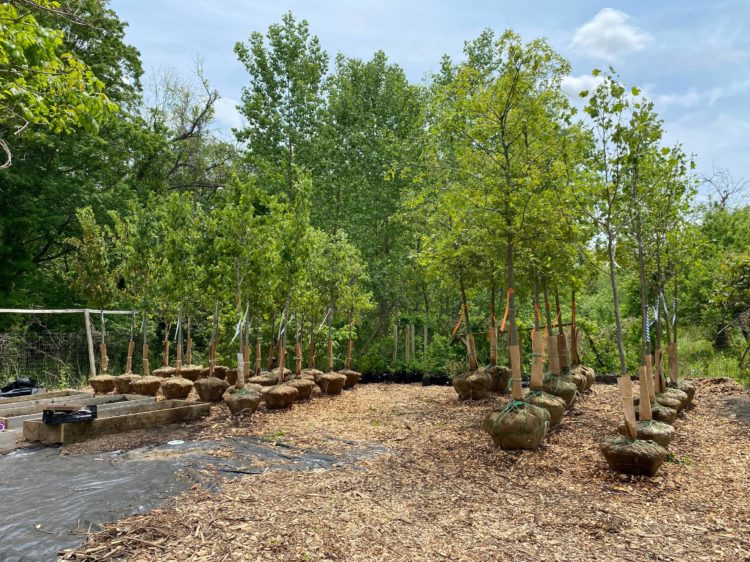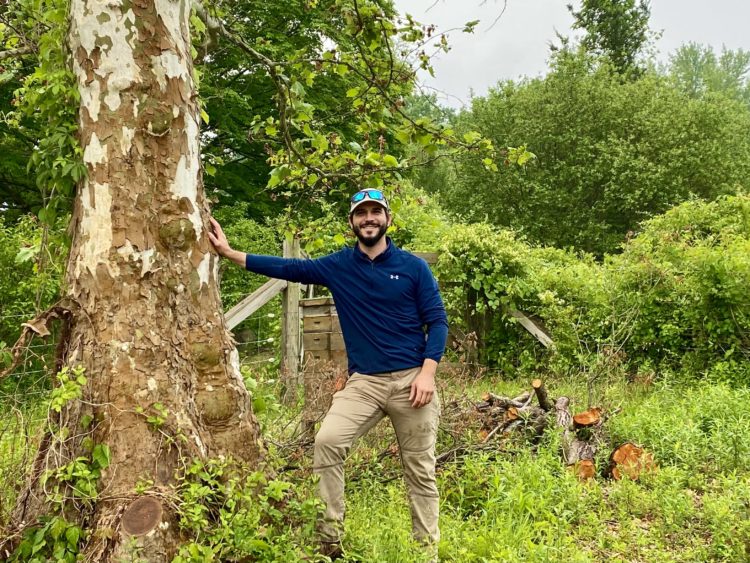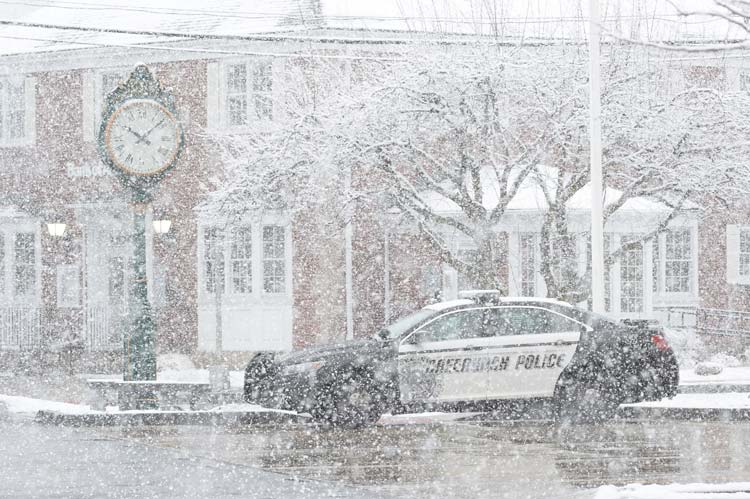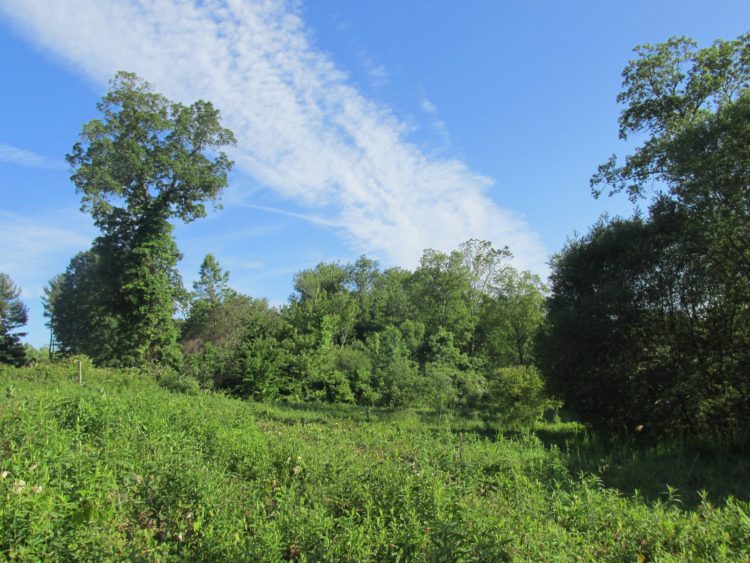
By Anne W. Semmes
Greenwich Audubon has an historic new planting project to be realized on its main Sanctuary grounds. The project will transform a fenced in near acre of land covered with a mix of grasses and invasive species to a landscape honoring the planting wisdom of the Siwanoy Indians once native to the Greenwich Audubon site – with an open-canopy forest dominated by oak, hickory, and other nut-producing tree species.
“We reached out to representatives from the Siwanoy tribe,” tells Audubon Land Steward Matt Viens, “and we selected a series of species important to the native peoples that we thought would do well on the site, provide benefit to the birds and other wildlife species we have here.
We’re going to be planting Shell Bark Hickory specifically. We’re going to be planting two different types of oak, Red Oak and Swamp White Oak. They produce acorns and hickory nuts -really good for food, both for people and for wildlife.”
Add to that another tribal recommendation that Viens researched, the Tulip Poplar. “From my understanding,” he says, “the wood of the Tulip Tree was used for a lot of different construction purposes – it has long, straight trunks.”
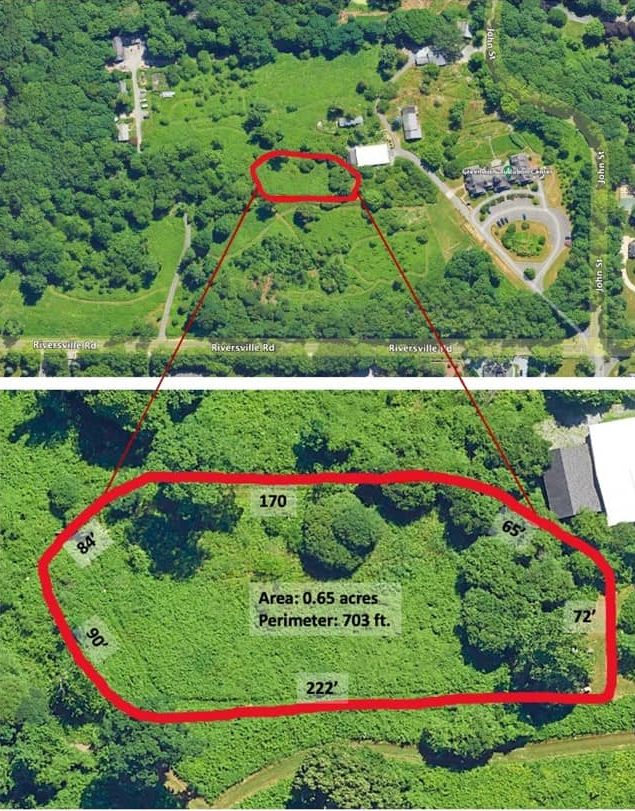
“Another exciting component of the project,” Viens tells, “is obviously American Chestnut used to be a huge part of our forests here. It’s another important nut producing tree. We reached out to folks from the American Chestnut Foundation. And we’re going to be getting 10 blight-resistant Chestnut seedlings to plant on this site as well.”
Yes, eventually, Viens expects some of those Chestnuts “will probably succumb to the blight, but it should be a number of years before that happens. By planting them, we’re hopefully helping further their restoration efforts and learning how these trees perform in the real world. Most folks, me included, really haven’t experienced a living stand of Chestnut. It’s another cool way to expose and immerse people in forest history and native history.”
Helping to realize this indigenous forest near acre will be the returning Eco-Leadership Corps of high school students with paid internships for eight weeks over the summer. “Last year they did an invasive control and tree planting project down at our Oneida Sanctuary,” tells Viens. “And they helped us put in a loop path and redesigned educational signage. Really like what they’ll be doing here.”
“Basically,” he adds, “the idea is that people will be able to walk into the site and immerse themselves in this historic forest community. In a way, that’s serving the same purpose then as have our New England stone walls or root cellars – it is a remnant of a past landscape and the people that lived in that landscape.”
Look to the organization Sustainable CT for its generous support for half the cost of this indigenous forest planting project – that will see the planting of a total of 50 tree saplings – by offering a match of $7,500 for the project cost of $15,000.
“We’re excited,” says Viens, “The fundraiser closes on June 15. And right now, we’re at just over $6,500, with 66 donors. And because it’s a grassroots funding program, one of the goals set by Sustainable CT is a required 75 individual donors to show broad community support for the project. So, we’re close to both of those goals.”
Veins, who came to the Center as land steward over a year ago with a master’s in environmental management from the Yale School of the Environment is hoping to see this indigenous forest project completed by end of this year. “As soon as the funding is done, our Eco Leaders start this summer…And then after the trees go in, we’ll do the path and signage.”
“And as people walk through,” he continues, “there will be informational signs describing the ecological community they’re seeing, explaining who the Siwanoy people were, and why they may have managed forest ecosystems in that way.”
Having studied forestry, Viens tells, “There’s a lot of research that’s been done on active native management of forests using fire, periodic and controlled repeated burning. What if we recreated a proxy for that without burning but create a mini forest ecosystem that basically looks like the forest that the Siwanoy Indians would have experienced and managed.”
“The idea is that post-burn, the forest is open canopy – picture a savanna almost,” he explains. “And then there’s grass shrub, native wildflowers in between. We’re trying to maintain that open canopy concept. And then, we’ll be planting a native wildflower mixture underneath. Again, we’re not going to burn, but we’ll do regular annual or bi-annual mowing to mimic what burning would do.”
“Oaks alone,” he concludes, “support something like 500 species of moth and butterfly caterpillar. There really just needs to be these wonderful keystone trees. And if we can do that in a way that also provides educational opportunity and honors the native legacy on site, then to me it’s a win-win.”
For those interested in contributing to the Sustainable CT funding of the Greenwich Audubon indigenous forest project visit
https://www.patronicity.com/project/honoring_indigenous_forest_management_at_greenwich_audubon_center#!/
